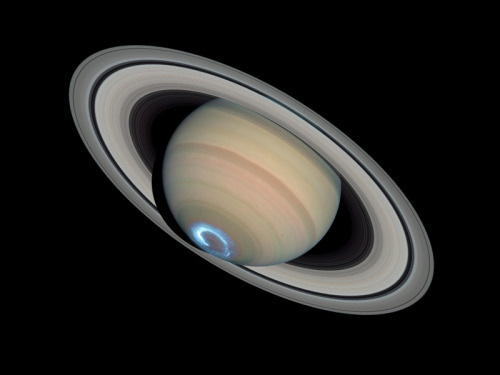Solar System 10 Things To Know: Planetary Atmospheres
Solar System 10 Things to Know: Planetary Atmospheres
Every time you take a breath of fresh air, it’s easy to forget you can safely do so because of Earth’s atmosphere. Life on Earth could not exist without that protective cover that keeps us warm, allows us to breathe and protects us from harmful radiation—among other things.
What makes Earth’s atmosphere special, and how do other planets’ atmospheres compare? Here are 10 tidbits:
1. On Earth, we live in the troposphere, the closest atmospheric layer to Earth’s surface. “Tropos” means “change,” and the name reflects our constantly changing weather and mixture of gases.

It’s 5 to 9 miles (8 to 14 kilometers) thick, depending on where you are on Earth, and it’s the densest layer of atmosphere. When we breathe, we’re taking in an air mixture of about 78 percent nitrogen, 21 percent oxygen and 1 percent argon, water vapor and carbon dioxide. More on Earth’s atmosphere›

2. Mars has a very thin atmosphere, nearly all carbon dioxide. Because of the Red Planet’s low atmospheric pressure, and with little methane or water vapor to reinforce the weak greenhouse effect (warming that results when the atmosphere traps heat radiating from the planet toward space), Mars’ surface remains quite cold, the average surface temperature being about -82 degrees Fahrenheit (minus 63 degrees Celsius). More on the greenhouse effect›

3. Venus’ atmosphere, like Mars’, is nearly all carbon dioxide. However, Venus has about 154,000 times more carbon dioxide in its atmosphere than Earth (and about 19,000 times more than Mars does), producing a runaway greenhouse effect and a surface temperature hot enough to melt lead. A runaway greenhouse effect is when a planet’s atmosphere and surface temperature keep increasing until the surface gets so hot that its oceans boil away. More on the greenhouse effect›

4. Jupiter likely has three distinct cloud layers (composed of ammonia, ammonium hydrosulfide and water) in its “skies” that, taken together, span an altitude range of about 44 miles (71 kilometers). The planet’s fast rotation—spinning once every 10 hours—creates strong jet streams, separating its clouds into dark belts and bright zones wrapping around the circumference of the planet. More on Jupiter›

5. Saturn’s atmosphere—where our Cassini spacecraft ended its 13 extraordinary years of exploration of the planet—has a few unusual features. Its winds are among the fastest in the solar system, reaching speeds of 1,118 miles (1,800 kilometers) per hour. Saturn may be the only planet in our solar system with a warm polar vortex (a mass of swirling atmospheric gas around the pole) at both the North and South poles. Also, the vortices have “eye-wall clouds,” making them hurricane-like systems like those on Earth.
Another uniquely striking feature is a hexagon-shaped jet streamencircling the North Pole. In addition, about every 20 to 30 Earth years, Saturn hosts a megastorm (a great storm that can last many months). More on Saturn›

6. Uranus gets its signature blue-green color from the cold methane gas in its atmosphere and a lack of high clouds. The planet’s minimum troposphere temperature is 49 Kelvin (minus 224.2 degrees Celsius), making it even colder than Neptune in some places. Its winds move backward at the equator, blowing against the planet’s rotation. Closer to the poles, winds shift forward and flow with the planet’s rotation. More on Uranus›

7. Neptune is the windiest planet in our solar system. Despite its great distance and low energy input from the Sun, wind speeds at Neptune surpass 1,200 miles per hour (2,000 kilometers per hour), making them three times stronger than Jupiter’s and nine times stronger than Earth’s. Even Earth’s most powerful winds hit only about 250 miles per hour (400 kilometers per hour). Also, Neptune’s atmosphere is blue for the very same reasons as Uranus’ atmosphere. More on Neptune›

8. WASP-39b, a hot, bloated, Saturn-like exoplanet (planet outside of our solar system) some 700 light-years away, apparently has a lot of water in its atmosphere. In fact, scientists estimate that it has about three times as much water as Saturn does. More on this exoplanet›

9. A weather forecast on “hot Jupiters”—blistering, Jupiter-like exoplanets that orbit very close to their stars—might mention cloudy nights and sunny days, with highs of 2,400 degrees Fahrenheit (about 1,300 degrees Celsius, or 1,600 Kelvin). Their cloud composition depends on their temperature, and studies suggest that the clouds are unevenly distributed. More on these exoplanets›

10. 55 Cancri e, a “super Earth” exoplanet (a planet outside of our solar system with a diameter between Earth’s and Neptune’s) that may be covered in lava, likely has an atmosphere containing nitrogen, water and even oxygen–molecules found in our atmosphere–but with much higher temperatures throughout. Orbiting so close to its host star, the planet could not maintain liquid water and likely would not be able to support life. More on this exoplanet›
Read the full version of this week’s Solar System 10 Things to Know HERE.
Make sure to follow us on Tumblr for your regular dose of space: http://nasa.tumblr.com.
More Posts from Sidusglacies and Others




Apollo art by Erich Fuchs, Robert McCall, Davis Meltzer, and Alan Bean.


what am I
why are star wars planets more boring than earth and our solar system like sure we’ve seen desert, snow, diff types of forest, beach, lava, rain, but like…

rainbow mountains (peru)

red soil (canada/PEI)

rings (saturn’s if they were on earth)

bioluminescent waves

northern lights (canada)


salt flats (bolivia, where they filmed crait but did NOTHING COOL WITH IT except red dust?? like??? come ON)

and cool fauna like the touch me not or like, you know, the venus flytrap.. and don’t get me started on BUGS like… we have bugs cooler than sw aliens
BASICALLY like???? come on star wars you had one (1) job where are the cool alien species


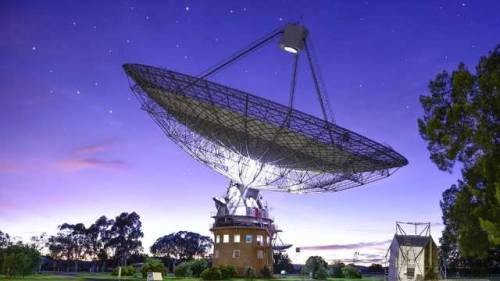
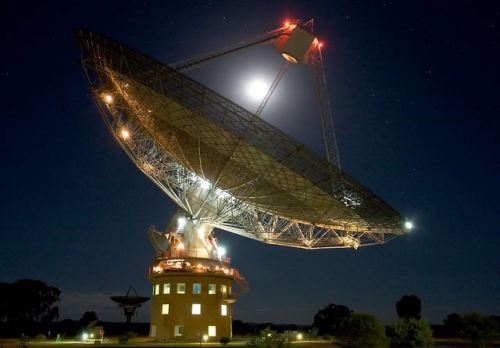


Parkes Observatory
The Parkes Observatory (also known informally as “The Dish”) is a radio telescope observatory, located 20 kilometres north of the town of Parkes, New South Wales, Australia. It was one of several radio antennae used to receive live television images of the Apollo 11 Moon landing. Its scientific contributions over the decades led the ABC to describe it as “the most successful scientific instrument ever built in Australia” after 50 years of operation.
The Parkes Observatory is run by the Commonwealth Scientific and Industrial Research Organisation (CSIRO), as part of the Australia Telescope National Facility (ATNF) network of radio telescopes. It is frequently operated together with other CSIRO radio telescopes, principally the array of six 22-metre (72 ft) dishes at the Australia Telescope Compact Array near Narrabri, and a single 22-metre (72 ft) dish at Mopra (near Coonabarabran), to form a very long baseline interferometry array. source
Huge news! Astronomers using the Hubble space telescope have discovered water in the atmosphere of an exoplanet in its star’s habitable zone. If confirmed, it will be the first time we’ve detected water—a critical ingredient for life as we know it—on an exoplanet. The water was detected as vapour in the atmosphere, but the temperature of the planet means it could sustain liquid water on its surface, if it’s rocky.
The planet is called K2-18b, and it’s about 110 light years away. The planet is much different than Earth. It’s a Super-Earth, and it’s twice as large as Earth, and about 8 times as massive. K2-18b is orbiting a red dwarf star, and it was first discovered in 2015 by the Kepler Space Telescope.
Dr. Angelos Tsiaras (UCL Centre for Space Exochemistry Data, CSED), said: “Finding water on a potentially habitable world other than Earth is incredibly exciting. K2-18b is not ‘Earth 2.0’ as it is significantly heavier and has a different atmospheric composition. However, it brings us closer to answering the fundamental question: Is the Earth unique?”
The team behind the discovery developed algorithms and ran archived Hubble data from 2016 and 2017 through them. They analyzed starlight from the red dwarf star as it passed through the exoplanet’s atmosphere. They discovered the molecular signature of water, as well as hydrogen and helium.
This discovery needs follow-up observations to confirm it. We also need better telescopes to study its atmosphere in greater detail, and the atmospheres of other exoplanets. Two telescopes on the horizon will tackle that job. The James Webb Space Telescope will have the powerful capability to examine the atmospheres of exoplanets, which is really the next step in understanding all of the exoplanets found by Kepler, and which will be found by TESS.
The ESA’s ARIEL (Atmospheric Remote-sensing Infrared Exoplanet Large-survey) mission will launch in 2028 and will study the atmospheres of about 1000 exoplanets in detail. ARIEL, along with the JWST, will give us a much better understanding of K2-12b and exoplanets like it.
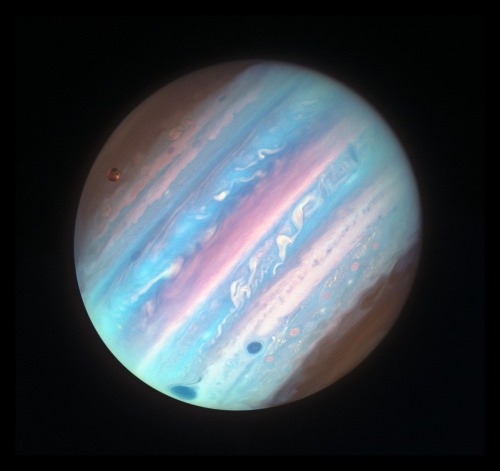
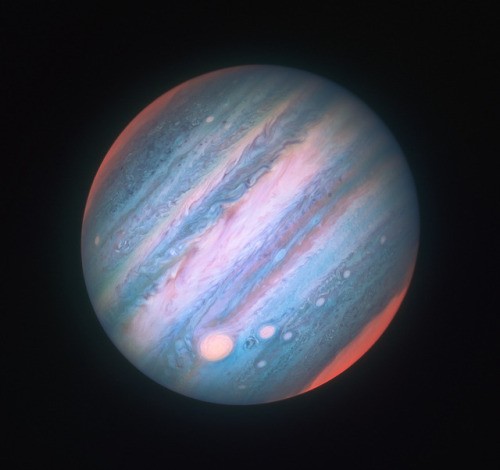
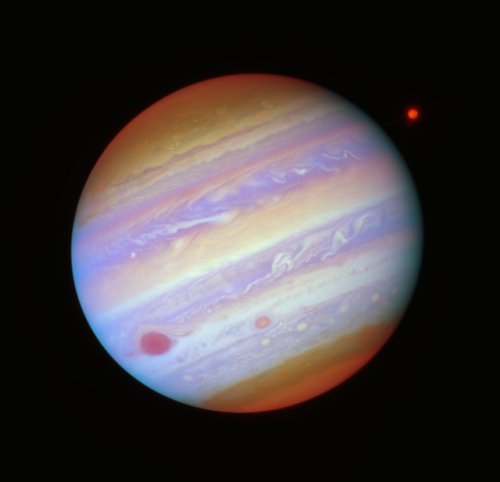
Jupiter (filtered) by Judith Schmidt.


The Size of the Sun As Seen From Each Planet
-
 princess-lyubova liked this · 4 months ago
princess-lyubova liked this · 4 months ago -
 cya666 liked this · 1 year ago
cya666 liked this · 1 year ago -
 kannoaya liked this · 2 years ago
kannoaya liked this · 2 years ago -
 wolves-r-watching liked this · 2 years ago
wolves-r-watching liked this · 2 years ago -
 cardofrage liked this · 2 years ago
cardofrage liked this · 2 years ago -
 andreutauro reblogged this · 3 years ago
andreutauro reblogged this · 3 years ago -
 yammaye liked this · 3 years ago
yammaye liked this · 3 years ago -
 darcythelunatic liked this · 3 years ago
darcythelunatic liked this · 3 years ago -
 scientificalparadox reblogged this · 3 years ago
scientificalparadox reblogged this · 3 years ago -
 sidusglacies reblogged this · 3 years ago
sidusglacies reblogged this · 3 years ago -
 mecca-mocca-tobacco liked this · 4 years ago
mecca-mocca-tobacco liked this · 4 years ago

